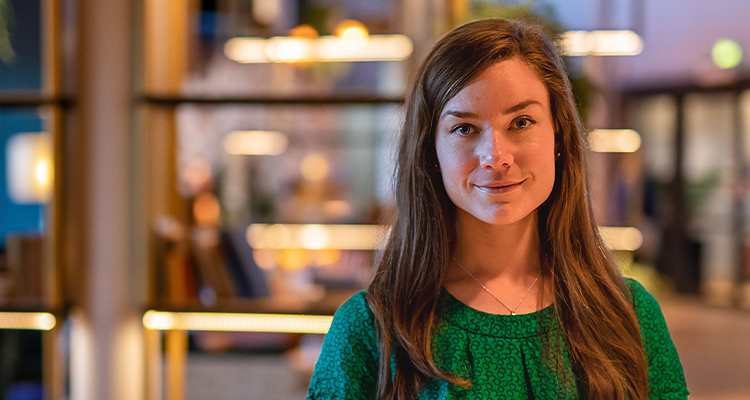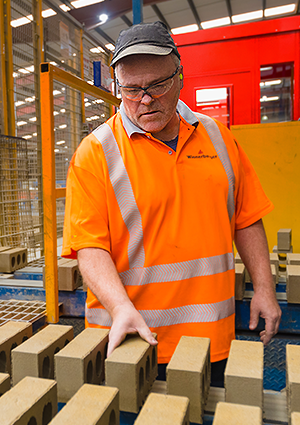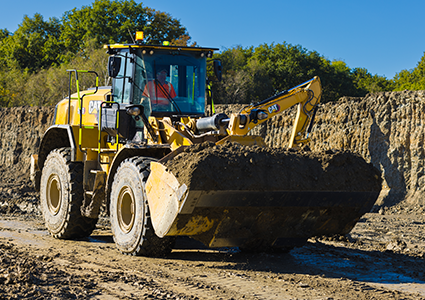
Wienerberger UK and Ireland’s Head of Sustainability is on a decarbonisation mission
Historically, each town in the UK may have had its own brick factory to serve the local construction industry. Over time, these smaller plants started to close, as they were consolidated into larger facilities with greater efficiencies and capabilities. As a result of this traditional structure, when you travel around the country, you will notice that bricks vary in colour and texture between different areas. There are further implications of these early practices, for Wienerberger UK and Ireland (Wienerberger) specifically, as Stephanie Palmer, Head of Sustainability, details.
 “So Wienerberger has around 16 factories, including our three subsidiaries, which span from Durham in the North to West Sussex, Kent, and Surrey in the South. We also have a showroom in Belfast, Northern Ireland and our subsidiary Cork Plastics is based in Cork, Ireland. This geographical spread reflects the industry’s historical roots; however, it also has implications for our decarbonisation approach. Given that the factories are different ages, with differences in equipment, it means that there’s a lot of variations to consider when we are planning energy efficiency or decarbonisation projects. Each of their unique sets of circumstances require specifically tailored solutions.”
“So Wienerberger has around 16 factories, including our three subsidiaries, which span from Durham in the North to West Sussex, Kent, and Surrey in the South. We also have a showroom in Belfast, Northern Ireland and our subsidiary Cork Plastics is based in Cork, Ireland. This geographical spread reflects the industry’s historical roots; however, it also has implications for our decarbonisation approach. Given that the factories are different ages, with differences in equipment, it means that there’s a lot of variations to consider when we are planning energy efficiency or decarbonisation projects. Each of their unique sets of circumstances require specifically tailored solutions.”
The organization’s parent company, the Wienerberger Group, was founded in 1819, and subsequently holds over 200 years of brick making experience. Over the years it has steadily expanded its operations to include a range of façade, wall, roof, landscaping and infrastructure products. Wienerberger UK and Ireland chiefly produces bricks and both clay and concrete roof tiles, however it also provides pavers, plastic piping, ventilation systems, membranes and roofing accessories. Traditionally, it has primarily served the newbuild residential market, but over the last decade or so, it has branched out into the renovation sector too.
Decarbonisation strategy
“We recently announced the intention to install an electric kiln at our Broomfleet factory, which manufactures clay roof tiles,” Stephanie continues. “The new addition will replace the current gas-fired kiln and eliminate the combustion of natural gas on site, which in turn will reduce that particular production line’s emissions by 75 per cent, if we are able to run it based on our renewable energy tariff, or onsite renewables. It should be the first clay roof tile factory in Europe to implement such technology, so it’s a really exciting investment!
“At present, Wienerberger is both an energy and carbon-intensive business, however we have a strategy in place to reduce the company’s impact that covers four key areas. The first is fuel switching for our ceramic kilns. I mentioned that we are planning to do this for our clay roof tile factory. We are still figuring out how to implement fuel switching at our brick sites, this might mean switching to electricity or hydrogen. There are pros and cons for each technology, such as system compatibility, and access to low carbon energy sources at the scale that the UK industry requires. Next, we have raw material optimisation, which has involved working alongside our suppliers such as Castle Clay Sales. They have been helping us to choose sands and clays with lower-embodied carbon levels that suit our factories.
“Thirdly, we have energy efficiency, which is a key part of any decarbonisation strategy,” she explains, “because you always want to be reducing your usage, before adjusting your fuel type. The fourth and final strand is the expansion of our portfolio of products, so that we can begin to decouple growth in our revenue streams from our carbon emissions and make the transition to net zero. We have recently launched Eco-brick, which is 37.5mm thinner than a traditional format brick, and allows housebuilders to add extra insulation to buildings, without absorbing any extra floorspace on the interior. These will help builders to maintain the popular bricks-and-mortar aesthetic, whilst increasing a building’s thermal performance. In addition to these, we have introduced in-roof solar panels to help reduce the operational emissions from buildings and provide some resilience to the recent energy price shocks.
“Since its  inception, Wienerberger has been supporting the construction industry in maximising the life cycles of buildings. The dominant UK method of building with bricks produces homes with extensive lifespans that you can get multiple mortgages on, and although there is quite a high level of embodied carbon at the outset, it is generally counterbalanced by the building’s longevity. Earlier this year, the Future Homes Hub produced a report on whole-life embodied carbon, and they are now starting to look at the entire life cycle impact of buildings, including the embodied carbon in their materials and the operational carbon that is used during building occupancy.
inception, Wienerberger has been supporting the construction industry in maximising the life cycles of buildings. The dominant UK method of building with bricks produces homes with extensive lifespans that you can get multiple mortgages on, and although there is quite a high level of embodied carbon at the outset, it is generally counterbalanced by the building’s longevity. Earlier this year, the Future Homes Hub produced a report on whole-life embodied carbon, and they are now starting to look at the entire life cycle impact of buildings, including the embodied carbon in their materials and the operational carbon that is used during building occupancy.
“This consideration of both factors is great,” Stephanie adds, “as a lot of legislation is currently only focused on thermal performances. The subsequent reductions in operational emissions are obviously important, however, without the entire perspective, it could lead us down a road of over-specifying the materials used to construct housing, creating unnecessarily high levels of embodied carbon within the structures themselves.”
Building beyond
When asked what she would like to see her department achieve by 2028, Stephanie first wishes to reflect on how far her team has come since 2018. “Energy efficiency and decarbonisation have always been high on the agenda, but the holistic concept of sustainability is something that we are still working hard to embed across all aspects of the business. Over the last five years, the agenda has expanded massively, and we now have far more support than we’ve ever had before, especially now that people are more engaged from a personal perspective, which really helps to open the doors for a conversation on how we can advance our sustainability agenda.
“In 2021, we released our sustainability strategy ‘Let’s Build Beyond’ containing our ambitions for 2030,” she concludes. “These include a specific carbon emission reduction of 40 per cent against our 2020 baseline, as well as commitments to planning for a 10 per cent net gain of biodiversity across all our manufacturing sites and implementing aspects of a circular economy in terms of producing new products that are recyclable or reusable. On the social side, we intend to produce a social value statement, and are already enhancing our staff’s training hours and addressing gender parity in the organization too.”